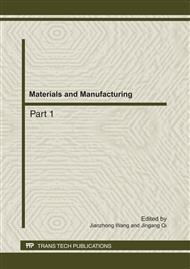p.1221
p.1227
p.1231
p.1235
p.1239
p.1244
p.1248
p.1252
p.1256
Aerosol Behavior in the near Wake Region of the Vehicle
Abstract:
In the present study, the interaction effects of different vehicle speeds and vehicular exhaust tailpipe exit velocity conditions on the exhaust particle dynamic behaviors in the near-wake region behind the studied vehicle were numerically investigated. The results showed that the particles were drawn up into the recirculation region and then moved toward into the upper vortex by its lower vortex. A lower particle number concentration behind the studied vehicle is observed for a higher vehicle speed because of the rapidly increasing dilution ratio and the nucleation rate. The particle volume concentration is the highest in the recirculation region behind the studied vehicle and is diluted gradually beyond the recirculation region in the downstream.
Info:
Periodical:
Pages:
1239-1243
Citation:
Online since:
July 2011
Authors:
Price:
Сopyright:
© 2011 Trans Tech Publications Ltd. All Rights Reserved
Share:
Citation:


